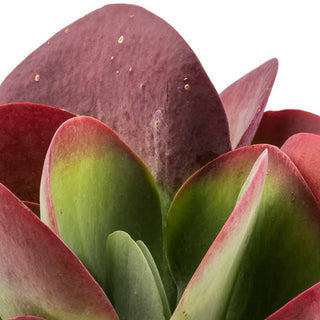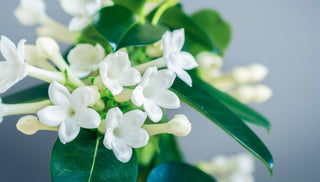☘ Origin: China, southern and southeast Africa, particularly in Madagascar
☘ Family: Crassulaceae
☘ Botanical Name: Kalanchoe
Symbolism: Kalanchoe plants symbolize endurance and lasting affection because of their long-lasting period of blooming. It can also symbolize wealth and prosperity.
🍃 Shop Your Kalanchoe Today!
🔆 Light
Indoor Kalanchoe can grow well in direct sunlight to bright indirect sunlight, such as from a south-facing or west-facing window. During the hot season, your Kalanchoe will benefit from the afternoon shade to protect it from sunburn during the hottest part of the day. With enough sun, the leaves will develop attractive red edges.
Give your plant a turn every few days to expose all sides to light for even growth from all sides.
💧 Water
Kalanchoe stores moisture in its thick, succulent leaves, so it's quite drought-tolerant. Wait until the soil has dried out completely, then water the plant deeply and allow the pot to drain fully. Check drip trays and saucers to make sure the plant isn't sitting in water, which can cause root rot. Water the plant less often in winter.
To give your plant the absolute best, room-temperature rainwater and bottled spring water are your best options. Any water containing sugar or salt will hurt your plant!
☁️ Humidity
Kalanchoe prefers low-humidity conditions. Overly humid conditions can contribute to fungal infections.
🌡️ Temperature
Because it's native to a hot climate, Kalanchoe prefers warm temperatures, and is not a cold hardy plant. It will do best - and most likely bloom - at temperatures (20-30°C).
🧴️ Food
Feed with a balanced liquid houseplant fertilizer diluted to half strength once per month starting in late winter or early spring. Continue through summer. You don't need to feed your Kalanchoe during fall and winter.
🐾 Toxicity
Kalanchoe plants can be harmful when ingested or eaten by humans or pets. In fact, all parts of a Kalanchoe are toxic.
➕ Additional Tips
Avoid treating Kalanchoe with oils, as they can damage the plant's protective powdery coating.
Kalanchoe can take several years to mature, and it's rare that indoor plants get enough light to bloom. The central rosette will grow tall and send up a flower spike that can reach up to (182cm) in height.


